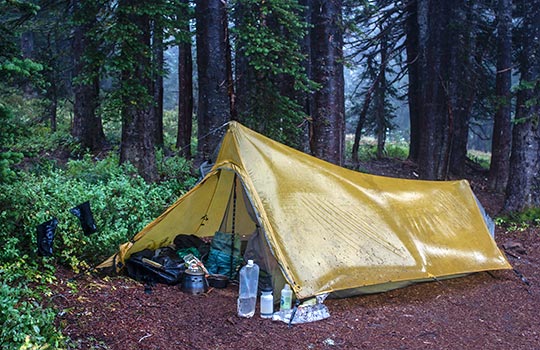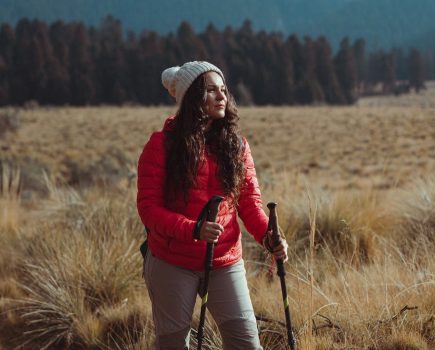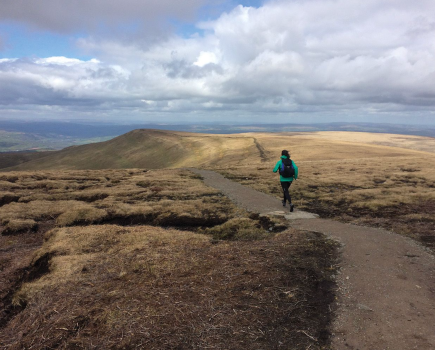Chris Townsend gives a step-by-step guide on pitching a tent and keeping gear dry in the rain
Staying comfortable and keeping your gear dry when camping in wet weather isn’t actually very difficult but it does require care and some thought. Site choice, setting up camp and living in camp all need handling differently from when it’s dry and sunny.
Site selection
A good site should be well-drained and high enough above streams and pools that it won’t flood if they rise rapidly. Avoid hollows and gullies. After heavy rain every flat area may be sodden. In that case it’s best to camp on a slight slope to avoid water getting into your shelter. The tops of knolls and hillocks are often better drained and drier than surrounding areas.
Setting up

Camp pitching
The aim when pitching is to keep the inside of your shelter and your gear dry. When taking your shelter out of your pack ensure that other items aren’t exposed to the rain and don’t fall out onto wet ground. (Ideally your shelter should be packed at the top of the pack where it’s easily accessible or else in a pocket or strapped on the outside.) With single-skin tents or tarps, double skin tents that erect as units and flysheet-first tents there isn’t a problem keeping the inside dry. However if the
tent pitches inner-first you need to do so very quickly and, if possible, throw the flysheet over the top to keep off some of the rain. Unfortunately this can be ineffective if it’s windy and can also make pitching the tent slower and more difficult.
Getting under cover
Once the shelter is pitched you need to get inside without dampening the groundsheet or any dry gear. First, though, do any outside chores such as filling your water containers so you don’t have to go out again. I then put the pack in the porch and crouch next to it while I strip off my wet waterproofs and any other wet garments – this can involve some contortions in a very small tent but it’s worth the brief discomfort. What I never do is get in the inner tent or sit on the groundsheet in wet clothing.Once my waterproofs are off I sit on the groundsheet with my feet in the porch and remove my footwear – and my socks if they’re wet too.
Sorting gear
Once in the tent and out of wet clothing and footwear it’s usually wise to put on some warm, dry clothes and get out your sleeping mat to siton so you don’t get cold. I then takeother dry items out of the pack andstow them along the sides of the groundsheet. No wet items come inside. They stay in the porch. Wet waterproofs and other damp clothing can be stored on top of the pack with footwear alongside it.
Living in camp

Reducing condensation
Once inside your shelter, condensation is likely to be the main cause of dampness rather than the rain itself. When humidity is high, condensation forms on cold surfaces like tent walls.Ventilation helps minimise this. Howmuch ventilation is possible withoutthe rain getting in depends on the design of the shelter. Ideally there should be covered vents high on the canopy that can be left open or flysheet doors with hoods over the top so the zips can be partly undone. Even with good ventilation condensation can still form when it’s very damp. To avoid transferring it to your dry clothes and sleeping bag take care not to push against the walls. An absorbent cloth such as a cotton bandanna can be used to wipe away any drips.
Cooking
Steam from boiling water quickly condenses on shelter walls. If conditions allow, doors should be left undone and stoves positioned so that steam goes outside. Sometimes, though, it’s impossible to have doors open without rain coming in. In that case keeping pans covered and unzipping doors briefly to let steam out can help reduce condensation.
Going outside
If you have to go outside (pee bottles and, for women, Sheewee urination devices can reduce the need for this) put your wet gear on so you don’t get anything else wet. If it’s a short trip I don’t bother with socks, just slipping my feet into my wet footwear. While outside, it’s worth checking guylines and pegging points. Nylon stretches and sags when wet (polyester and cuben fibre don’t do this) so guylines will probably need tightening. Pegs can start to pull out of soft damp ground too and may need stamping down.
Packing up

If it’s still raining in the morning, pack everything into your rucksack inside your shelter so it stays dry. This includes the inner tent if there is one.To avoid a wet shelter dampening the inside of the pack I strap it on the outside or stuff it in an outside pocket. If it has to go inside the pack I ensure that other contents are inside waterproof bags or liners and the shelter is outside them.







